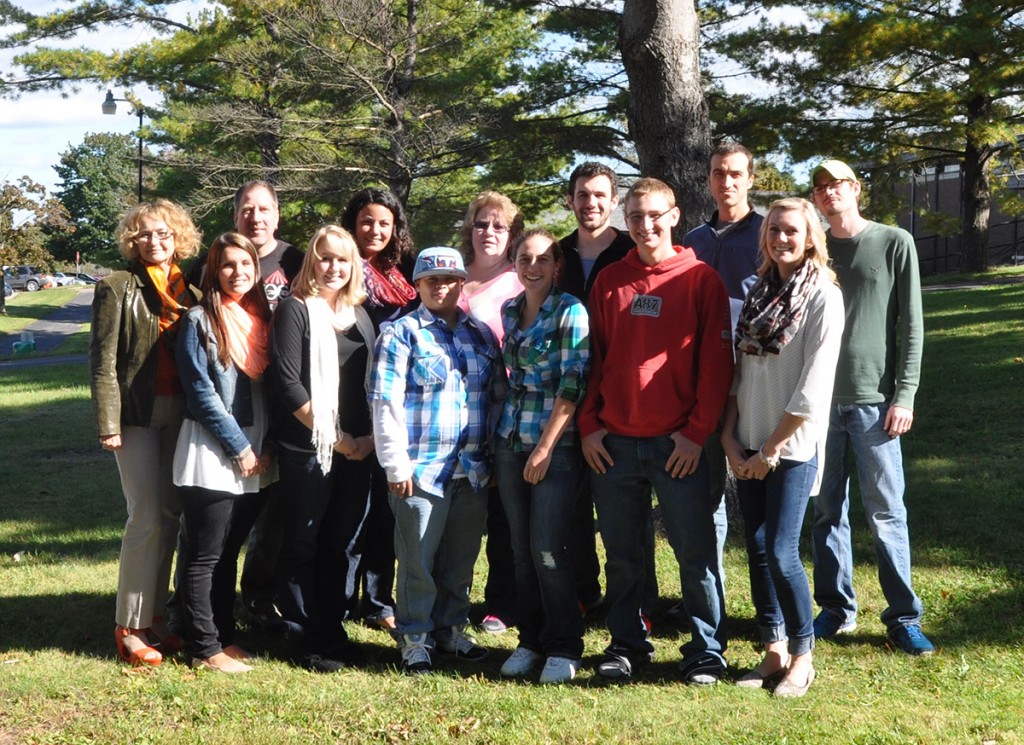
The holidays remind us this is the season of giving. All members of SUNY make a concerted effort to volunteer and contribute to their respective campuses and local communities. The 30 Days of Giving campaign highlights students and faculty across all of our 64 campuses who participate in volunteerism and give back to those in need. With over 467,000 students and three million alumni, we want to celebrate the impact the SUNY community has made in all of their unique community service projects. As we learned last year, the byproduct of taking volunteerism to scale is not only building character in our students themselves as they join our over three million alumni, but also to set an example of impact as the nation’s largest university system.
__________________________________________________
Day 29
Fulton-Montgomery Community College
Service Learning at FM
by: Cindy Close
About five years ago, I attended a lecture on “Service Learning.” I was excited to try this new way to teach in my Advanced Procedures class at Fulton-Montgomery Community College. Since my students began Service Learning projects, I am convinced that experiential learning provides the greatest lessons, both in and out of the classroom.
What is Service Learning? It is the combination of two learning parameters: service, which is contribution to the welfare of others; and, learning, which is acquired knowledge or skill. Service Learning blends service and learning so that the service reinforces, improves, and strengthens the learning while the learning reinforces, improves, and strengthens the service. Service Learning produces a greater impact than either could have produced separately.
Service Learning promotes learning through active participation in service experiences. It provides an opportunity for students to use skills and knowledge in real-life situations and extends learning beyond the classroom and into the community. It fosters a sense of caring for others and provides structured time for students to reflect by thinking, discussing, and/or writing about their experiences.
Why try Service Learning? Service Learning increases the civic and citizenship skills of the student and provides direct service that benefits the community. It gives students greater responsibility for their learning and increases student awareness of community issues while at the same time, increases community awareness of student resources.
Since 2008, my students have participated in five Service Learning projects including, “Breast Cancer Awareness,” “The Alzheimer’s Project,” “Diabetes Education,” and “Autism Awareness.” This year our project is “Disaster and Trauma” where students are divided into three teams: A, B, and C.
Team A will research, prepare, and distribute Home Emergency Preparedness packets to the public. Team B will research the difference between ‘shelter in place’ and ‘seek shelter’ on campus. They will organize and present a video presentation to be added to the FM website. Team C will perform six hours of community service in Fort Plain, aiding victims of recent flooding and helping to clean up homes. Students will submit a journal documenting their personal service-learning experiences and research learning objectives relating to disaster and trauma. Each team will submit a research paper and will present their experiences and findings on campus, Thursday, October 17. The public is welcome and invited to attend.
What is the overall impact of Service Learning projects? First, let me say that at the onset, students are not exactly thrilled to participate in service learning. Early journal entries include comments like: “I don’t have time for this,” and “Volunteering is a personal choice and should not be forced upon us.” Later entries reflect an entirely different opinion: “I decided that this was not just for the grade and realized that this is a large part of who I am,” and “The project made me feel fulfilled…I am thankful for this experience.”
I am also grateful for this experience. Students make me a better teacher; I learn along with them. Students experience the best and largest impact. They develop a connection with their neighbors and the neighborhood gains insight into the college community. This begins a pattern of communication that extends beyond the classroom. The student feels connected with the community and the community develops a sense of “ownership” with the College. FM is proactive; Service Learning discovers humanity.

__________________________________________________
More Days:

